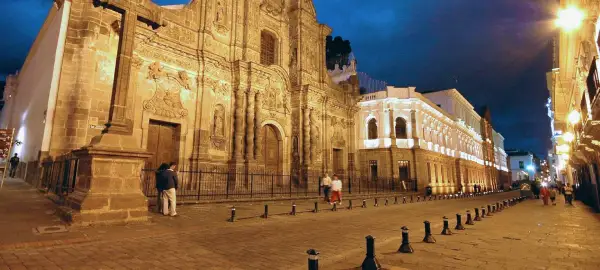- Overview
- Info & Inclusions
- Itinerary
- Map & Hotels
- Photos
- Dates & Prices
- Max Group Size 18
- Guided Amazon adventure
- Guided colonial Quito tour
- Otavalo Valley-cultural centre
- Famed 'Avenue of Volcanos'
- Overnight at historic hacienda
- Cotopaxi Forest Reserve
- Singles friendly (view options for single travellers)
From the frenetic pace and man-made aesthetic beauty of the capital city of Quito, we make headway for the tranquility and natural splendour of one of the world's few remaining untouched wilderness regions; the Amazon rainforest.
We keep a vigilant eye for colourful flora and teeming fauna as we explore the Ecuadorian Amazon jungle and see things from a different perspective when we embark on a short canoe-trip to explore inaccessible areas.
Along the 'Avenue of the Volcanoes', a striking passage that snugly rests between the major cordillera ranges, we admire the contrast between the equatorial lushness in the valley and the snow-crested peaks of the surrounding mountains and we get our fill of historic sites of interest when we visit the colonial "White City" of Ibarra and the UNESCO-designated urban centres of Quito.
Our browsing in local marketplaces gives us valuable insight to the country's contemporary culture and the lifestyles of its people.
- MealsSavour authentic flavours with included daily breakfasts and dinners at hotels or handpicked local restaurants—immersing you in local cuisine without worrying about reservations or budgets.
- Transport & Logistics
Private air-conditioned coaches and included internal ferries and flights—ensuring hassle-free travel so you can focus entirely on the discoveries ahead.
"Adventures Abroad tour leader's management and guest services managed the tour with great skill and dedication. The tour leader was on top of every move and transfer. We have not experienced any issues with logistics and had a great time."
~ JULIA O"The tour leader did an excellent job coordinating some difficult travel logistics, power outage issues and resolving problems and dealing with guests who had unrealistic expectations."
~ CYNTHIA COLLINS - Expert Guidance
Unlock insider secrets at every landmark with your full-time Tour Leader and expert local guides , all gratuities covered—no hidden tipping surprises—so you immerse fully in your destination's stories, worry-free. (Except for the tips to your tour leader at the end of your tour.)
"Amazing tour guide. Our tour guide was very well organized, Her passion, knowledge, and enthusiasm completely transformed the travel experience into something truly unforgettable..."
~ MELANIE LEMAIRE"Highly recommend every trip with Adventures Abroad. It's a well organized and well thought out adventure. The tour leaders are friendly, knowledgeable and experienced professionals. Highly recommend this company."
~ SUSAN WALL - Sightseeing & EntrancesAll entrance fees for sites visited as per the itinerary—no hidden costs—so you can explore ancient ruins and excursions with complete peace of mind.
- AccommodationsUnwind in clean, well-located 3 to 4-star hotels with private en suite facilities—handpicked for comfort and convenience after each day's discoveries—so you can rest easy knowing your stay supports the real adventure, not steals the spotlight.
- Small Group
Discover the world in small groups of up to 18 travellers plus your expert Tour Leader—unlocking spontaneity, off-the-beaten-path adventures, and genuine connections at a relaxed pace, free from crowds.
"Looking Forward to My Next Adventure The best feature of the Adventures tour was the small size that allowed the group to quickly load up, let everyone get acquainted within the first 24 hours, capitalize on unplanned surprises along..."
~ PHILIP BLENSKI"Good value for a great time I have traveled with Adventures Abroad for over 20 years now. Well thought out, interesting itineraries and the other travelers congenial and friendly. The price always seems fair and overall a..."
~ Trusted Customer - Airport Transfers For Land & Air CustomersWe handle hassle-free airport transfers for all our land and air tour customers—plus early arrivals or late departures when you book extra hotel nights directly with us for added peace of mind.
- International airfare to/from the tour.
- Tour Leader gratuity, most lunches, drinks, personal items (phone, laundry, etc), departure taxes, domestic and international air taxes (if applicable).
- Airport transfers for Land Only customers.
- Optional trip cancellation insurance.
- Tipping:
- The Amazon portion of your tour will not be accompanied by an Adventures Abroad Tour Leader as your visit will be very capably managed by lodge staff. As such, we do not including tipping for these days in our tour price as we leave this to your own discretion based on quality of service received. Though the size of your gift is discretionary, for the sake of guidance, the customary recommended amount is US$150 per person for our three 3-night stay.
- Seasonality and Weather:
This tour is offered throughout the year. The cool and dry season runs from May to October; outside of this time you will encounter warmer and perhaps rainy/misty conditions in the highlands but serious heat & humidity are only a consideration in the Amazon. - Transport and Travel Conditions:
Land transport throughout by private air-conditioned motor coach, 24-36 seats depending on ultimate group size (see 'group size'). Though we will have some full bus days, road travel is not particularly arduous as there are plenty of stops of interest. Roads are in good condition though winding on some stretches.
Baggage handling service is usually in Ecuador though you should be independent with your luggage, especially at airports.
Our difficulty rating of "Level 2" reflects the generally ambitious nature of our program, which features full days of travel and sightseeing, plenty of walking at sites that may be quite large and feature uneven/cobbled surfaces, stairs, heat, and some remote locations. You must also be prepared for short walks to dinner when we dine outside hotels, and to be fully-independent with your luggage in the event that porters are not available. While we don’t include any strenuous activities such as extended hiking or cycling, you must be steady on your feet and able to fully manage yourself and your belongings. And as always on any of our tours, if you rely heavily on a cane or any other mobility device, this tour would not be suitable for you.
Though most people are not seriously affected by altitude as we do not surpass 3000m/10,000 ft on this trip, we require that all participants submit a “Self-Assessment” form confirming their suitability for this journey. We suggest that you preview this form, which includes more detail regarding what you can expect on tour, by clicking the “Resources” tab at the top of this page.
Am I suitable for this tour? Please refer to our self-assessment form - Activity Level: 2
These are particularly busy tours that feature a lot of moving around, sometimes by train and short journeys on local transport. Walking tours of towns and cities are leisurely but you should be prepared to be on your feet for several hours. Some of our cultural trips that occur at high altitude and/or require greater independence with baggage handling (at hotels, airports, train stations) also fall into this category.
To learn more about the Activity levels, please visit our tour styles page. - Accommodation:
Well-located, heated/air-conditioned (except Amazon), mid-range (3- star) hotels with en suite toilet and bath throughout. The Amazon lodge is a little more rustic, but still very nicely appointed. Porter service is usually in Ecuador though you should be independent with your luggage, especially at airports. Single rooms are limited and likely smaller than twins. - Staff and Support:
Tour Leader, local guides, local driver. - Group Size:
Maximum 18 plus Tour Leader
- Day 1:Arrival in QuitoWelcome to Ecuador, where the equatorial sun bathes ancient volcanic peaks and the spirit of adventure beckons from every cobblestone street. We arrive in Quito, Ecuador's captivating capital, perched dramatically at 2,788m (9,200 ft) against the imposing backdrop of Pichincha Volcano.
This evening, as we settle into our hotel and gather with fellow travellers for our first meal together, we're embracing a city that has stood sentinel over the Andes for centuries. Quito's name derives from the Quitu people, who first established settlements here long before the Inca empire extended its reach northward.
Overnight in Quito
Included Meal(s): Dinner, if required - Day 2:Quito - Fly to Amazon RegionWe take to the skies this morning, trading the cool Andean air for the warm, humid embrace of the Amazon basin. Our flight delivers us to a world where time moves differently, measured not by clocks but by the rhythm of flowing water and the calls of exotic birds.
The Napo Cultural Centre welcomes us from the banks of the Napo River, the Amazon's largest tributary in Ecuador and our gateway into Yasuni National Park—one of Earth's most biodiverse sanctuaries. We board traditional ecological canoes powered by outboard motors, beginning a two-hour journey downstream that feels like travelling back through evolutionary time.
As we glide along the chocolate-coloured waters, herons stand motionless as sculptures while kingfishers dart like jewelled arrows across our bow. Terns wheel overhead, and the dense green walls of the rainforest stretch endlessly in all directions. Upon arrival, we're greeted with a traditional Kichwa drink, our first taste of indigenous hospitality that has welcomed river travellers for generations.
This afternoon, we walk to the Napo's sandy beaches to witness one of nature's daily spectacles—an Amazonian sunset painting the sky in brilliant oranges and purples while the forest awakens with its nocturnal symphony.
PLEASE NOTE that your Amazon stay will not be accompanied by an Adventures Abroad Tour Leader, during which you will be very capably looked after by lodge staff & guides. Please also note that the itinerary description for the next few days in the Amazon is subject to change by lodge staff and is indicative only.
Overnight in the Amazon
Included Meal(s): Breakfast, Lunch and Dinner - Day 3:Amazon ActivitiesWe begin before the forest fully awakens, boarding our canoe as mist still clings to the water's surface. Our destination is one of the Amazon's most spectacular natural gatherings—a parrot clay lick where approximately 11 species of parrots, including brilliant macaws and diminutive parrotlets, congregate to consume essential minerals from exposed riverbank clay.
This morning ritual, dependent on weather and season, offers us front-row seats to a symphony of colour and sound as dozens of birds create a living kaleidoscope against the green backdrop. The clay provides nutrients these birds cannot obtain from their fruit and seed diet, making this site crucial to their survival and a privilege for us to witness.
We then proceed to the Interpretation Center "Kuri Muyu," where Kichwa women share the profound knowledge their ancestors have accumulated over millennia. Here, we discover how every vine, leaf, and bark serves a purpose in traditional medicine and daily life, understanding that the forest is not wilderness to be conquered but a pharmacy and hardware store perfected by nature.
This afternoon, we climb a 35-metre (115 ft) observation tower that lifts us into the rainforest canopy—a vertical journey into different worlds. At the top, we're eye-level with howler monkeys whose territorial calls can be heard 5km (3 mi) away, while toucans display their magnificent beaks and three-toed sloths move with deliberate slowness that has ensured their survival for 35 million years.
Overnight in the Amazon
Included Meal(s): Breakfast, Lunch and Dinner - Day 4:Amazon Activities ContinuedWe venture deeper into Kichwa territory today, visiting community projects that demonstrate how indigenous peoples have sustainably managed these forests for over 4,000 years. Our hosts share their worldview—a philosophy where humans are not separate from nature but integral threads in its vast web.
Walking among giants, we stand before ceiba trees that soar 60m (200 ft) skyward, their massive buttressed roots creating natural amphitheatres. These forest cathedrals have witnessed centuries pass, serving as landmarks and spiritual centres for generations of Kichwa families. We discover bamboo groves so dense they create their own microclimates, and vines thick as ship cables that provide highways for monkeys and pathways for countless other creatures.
As afternoon light filters through the canopy in golden shafts, we board smaller canoes for Anangu stream. This intimate waterway winds through primary forest largely untouched by outside influence, where every bend reveals new wonders. As darkness falls, we search for caimans—ancient predators whose eyes reflect our lights like rubies floating on black water.
The forest's nocturnal awakening surrounds us with a symphony that includes over 160 species of frogs, each contributing their unique voice to nature's oldest composition. Tonight, we understand why indigenous peoples consider the rainforest alive with spirits—here, every shadow moves and every sound tells a story.
Overnight in the Amazon
Included Meal(s): Breakfast, Lunch and Dinner - Day 5:Amazon - Fly to QuitoWe rise at 4:30 AM to participate in wayusa (optional), an ancient Kichwa ritual that connects communities with their ancestors and the forest spirits. This sacred tea ceremony, accompanied by traditional songs passed down through generations, energizes both body and soul while sharing wisdom that predates written history.
As we prepare for our return journey to Coca, the modern world feels simultaneously near and impossibly distant. The motorised canoe carries us back along the Napo, but now we see this mighty river through different eyes—understanding its role as a highway, a source of life, and a sacred waterway that has sustained indigenous communities for millennia.
For those seeking final aquatic adventures, tubing and regatta activities on the Napo provide playful farewells to this liquid landscape. Our flight back to Quito lifts us from the green infinity of the Amazon basin to the sharp-edged reality of the Andes, trading humid warmth for crisp mountain air.
Tonight in Quito, we carry with us the sounds, scents, and profound lessons of the rainforest—understanding that we've witnessed one of Earth's most critical ecosystems and the people who have been its guardians for countless generations.
Overnight in Quito
Included Meal(s): Breakfast and Dinner - Day 6:Quito: City TourWe step into the cobblestone streets of Old Quito this morning, entering a UNESCO World Heritage Site where Spanish colonial ambition created one of South America's most magnificent architectural treasures. Founded in 1534 on the ruins of an important Inca city, Quito became the artistic heart of the Spanish empire in the New World.
At the commanding Legislative Palace, elaborate murals chronicle Ecuador's tumultuous journey from indigenous kingdoms through colonial rule to independence. We discover the cathedral where Ecuador's founding fathers planned revolution, and stand in Independence Plaza where liberty was first declared in 1809—ten years before the rest of South America followed.
San Francisco Church astounds us with its massive scale and intricate stonework, but La Compania church truly takes our breath away. Here, Jesuit architects created what many consider the most ornate religious building in the Americas, with every surface covered in gold leaf that required seven tons of precious metal. The baroque facade alone took 160 years to complete, representing the accumulated wealth of an entire continent flowing through colonial Quito.
We then ascend Panecillo Hill, where the towering Virgin of the Apocalypse spreads her wings 45m (148 ft) above the city. From this vantage point, Quito spreads below us like a living map, with the snow-capped peaks of the Andes forming a magnificent amphitheatre around this remarkable capital.
This afternoon, we journey 22km (14 mi) north to the Equator line monument, where we stand with one foot in each hemisphere. The on-site ethnographic museum reveals Ecuador's incredible diversity—a country where 14 distinct indigenous nations maintain their unique languages, traditions, and worldviews.
Overnight in Quito
Included Meal(s): Breakfast and Dinner - Day 7:Quito - Otavalo Valley - IbarraWe journey north today into the Otavalo Valley, where the threads of history weave together indigenous resistance, Spanish colonialism, and modern economic success into a story unlike anywhere else in South America.
In the 14th century, when Inca expansion reached northward, the fierce Caraquis people inhabited these fertile valleys. For 17 years, these defiant warriors resisted Inca subjugation in battles that became legendary throughout the empire. The Spanish arrival brought different chains—a hacienda system forcing Otavalenos into 15-hour weaving shifts that nearly destroyed their culture.
But the Otavalenos transformed oppression into opportunity. Today, their weaving tradition forms the foundation of a lucrative industry that has allowed indigenous peoples to join the global economy while proudly maintaining their traditional values, language, and distinctive dress. We visit a traditional adobe home where guinea pigs—considered a delicacy for over 5,000 years—still scurry around the kitchen, representing one of the Andes' original sources of protein.
In Otavalo city, we wander through some of South America's most vibrant handicraft markets, where textiles in brilliant colours display techniques perfected over centuries. The quality and artistry evident in every weaving, carving, and piece of jewellery reflects a culture that refused to disappear.
Our hosteria near colonial Ibarra provides views of this "White City," so named for its red-tiled, whitewashed houses that climb the hillsides at 2,121m (7,000 ft). Founded in 1606, Ibarra has survived earthquakes, volcanic eruptions, and revolutions while maintaining its dignified colonial character.
Overnight in Ibarra
Included Meal(s): Breakfast and Dinner - Day 8:Ibarra - Avenue of Volcanoes & Cotopaxi - La CienegaToday we follow in the footsteps of the German scientist, Alexander von Humboldt, and rediscover what in 1802 he called the "Avenue of Volcanoes," a 325 km (202 mi) long valley between the major cordillera ranges. Massive and standing alone, the volcanoes provide brooding, snow-covered contrast to the green equatorial lushness. We see snow-capped summits, mystical brooks and rivers, terraced farmlands, small villages and fascinating cultures.
We’ll take the Pan-American Highway southwards and take a side road to discover the impressive volcanism, flora, and bird-life that the Cotopaxi national park protects. Whilst in the national park, we will visit to the Interpretation Center and the Limpiopungo Lake and also complete a short hike that will let us enjoy this natural wonder.
The area is also home to a number of exceptional haciendas, some of which date back to the 16th century. La Cienega Hacienda is located near the village of Lasso near the foot of Cotopaxi and has been witness to centuries of important events in the history of Ecuador.
Overnight at Hosteria La Cienega (Lasso area).
Included Meal(s): Breakfast and Dinner - Day 9:La Cienega - Pillaro - BanosToday we continue our journey to Banos. We will make a stop in Pillaro where we will visit a traditional workshop of masks that are used in the Pillaro Devil parade, an important cultural expression of the local indigenous people.
We arrive in Banos, a small town whose elevation gives it an extremely agreeable climate and the surrounding mountainsides are brilliant green against the white summit of the Volcano Tungurahua. The word Banos means "baths" and, as the name indicates, the highlight is the numerous hot spring baths in the area.
Today we have opportunity to visit the hot springs as well as wander the streets and market of this picturesque town. You can also hike into the nearby hillsides, along farmers' donkey trails through fields of corn, passion-fruit, and various other local products. A must-see is the Basilica dedicated to the Virgin of the Holy Water, credited with performing many miracles in the Banos area.
Overnight in Banos.
Included Meal(s): Breakfast and Dinner - Day 10:Banos - Devil's Bowl - RiobambaBefore departing Banos, we witness one of South America's most impressive waterfalls—the Devil's Bowl, where the Pastaza River plunges through a narrow gorge with thunderous power. The waterfall's name reflects indigenous beliefs that such dramatic natural features serve as portals between the physical and spiritual worlds.
At El Manto de la Novia (Bridal Veil Falls), we experience a cable car ride over the Pastaza River Canyon, suspended above roaring rapids that have carved their path through solid rock for millennia. The sensation of flying through this dramatic landscape provides perspective on the incredible forces that continue shaping the Andes.
After lunch, we travel through rolling farmland that flows over the high ridges of the Western Andes toward Riobamba, situated at 2,750m (9,035 ft). This charming Andean city, with its colonial architecture and cobblestone streets, serves as the gateway to Ecuador's highest peaks, including Chimborazo—the point on Earth's surface closest to the sun due to our planet's equatorial bulge.
Riobamba's impressive plazas and fascinating markets buzz with activity from indigenous people dressed in traditional clothing, creating a living museum where ancient customs continue alongside modern life. The Monasterio de las Conceptas and other colonial buildings reflect the city's importance during Spanish rule, when it served as a crucial stop on the royal road connecting Quito with Peru.
The city's small-town atmosphere intensifies as evening approaches, with the surrounding peaks creating a natural amphitheatre that makes Riobamba feel both protected and dramatically exposed to the raw power of the Andes.
Overnight in Riobamba
Included Meal(s): Breakfast and Dinner - Day 11:Riobamba - Ingapirca - CuencaToday our journey continues by road to Cuenca, detouring to visit the Archaeological Complex of Ingapirca, the best-preserved and most important Inca site in Ecuador. Though not on the same scale as, say, Machu Picchu, the ruins include a large oval construction once used for ritual and astronomical purposes. Just outside the ruins, the Museo Sitio de Ingapirca displays a skeleton, tools, and other artifacts recovered from the area. We'll also visit a local market, see the first church established in Ecuador, tour the historic town of Alausi, and enjoy views of Devils Nose Mountain.
Once the site of an Inca settlement, Cuenca today is considered Ecuador's most beautiful city. Its historical connection with Spain is marked by narrow cobblestone streets, quaint parks, and romantic plazas. Charming adobe houses, wrought iron balconies, and religious art treasures capture the spirit of centuries long past. Cuenca, almost hidden away in a southern valley, was isolated until recent times; it wasn't until 1960 that paved roads were built to Quito and Guayaquil. Today's Cuenca is surrounded by small villages whose citizens create intricately detailed jewelry, beautiful ceramics, and masterfully-designed hand-woven shawls.
You'll have time to wander the quaint streets in the compact centre of this charming town before reconvening for our evening meal.
Overnight in Cuenca.
Included Meal(s): Breakfast and Dinner - Day 12:Cuenca: Walking Tour & Museo del Banco CentralWe begin our leisurely walking tour at Parque Calderon, Cuenca's main plaza, where the rhythms of daily life unfold as they have for centuries. The old Cathedral, renovated for Pope John Paul II's 1985 visit, showcases the religious art that made colonial Cuenca famous throughout the Spanish empire.
We explore the Monastery of El Carmen and visit La Inmaculada Concepcion while strolling cobbled streets that echo with centuries of footsteps. Every corner reveals architectural details that reflect the wealth flowing through colonial trade routes—carved stone facades, intricate ironwork balconies, and courtyards designed around Spanish ideals of beauty and status.
This afternoon, we visit the Museo del Banco Central, where black and white photographs capture 19th and early 20th-century Cuenca in remarkable detail. The archaeological pieces and ethnographic dioramas reveal layers of history, from pre-Columbian indigenous cultures through Spanish colonisation to modern Ecuador.
We also visit a Panama hat factory, discovering the fascinating story behind these world-famous hats that actually originated in Ecuador. In 1835, Spanish entrepreneur Manuel Alfaro arrived in Guayaquil and recognised the economic potential of toquilla straw hats. He established production chains from straw plantations to weaver networks, exporting his hats through Panama—which was becoming an important centre for international trade.
Overnight in Cuenca
Included Meal(s): Breakfast and Dinner - Day 13:Cuenca: At LeisureToday belongs entirely to you in this enchanting UNESCO World Heritage city that Travel and Leisure magazine once named the best place in the world to retire. More than 8,000 US and Canadian citizens have made Cuenca their home, drawn by its perfect climate, low cost of living, and the timeless beauty of its colonial architecture.
Cuenca's compact historic centre invites wandering, with each street revealing new architectural treasures and hidden courtyards. The city's four rivers—the Tomebamba, Yanuncay, Tarqui, and Machangara—create natural boundaries that frame different neighbourhoods, each with its own character and history.
You might visit additional museums, explore local markets where vendors still speak Kichwa alongside Spanish, or simply find a plaza café where you can watch daily life unfold at its unhurried pace. The surrounding mountains create microclimates that keep temperatures comfortable year-round, making every day perfect for exploration.
Many travellers use this free time to purchase local crafts directly from artisans, understanding that every purchase supports traditional skills passed down through generations.
This is your day to absorb the rhythms of a city that has successfully balanced preservation with progress, creating a living museum where past and present coexist in remarkable harmony.
Overnight in Cuenca (due to the informal nature of the day, and for a break from the group meal dynamic, we don't include your evening meal today)
Included Meal(s): Breakfast - Day 14:Cuenca - Cajas National Park - GuayaquilToday we travel by road to Guayaquil via Cajas National Park.
The park contains hundreds of clear, cold lakes, streams, and rivers. Weather-permitting (which can be highly changeable at this altitude), the park can provide an excellent opportunity for us to hike the grassland of Paramo Region or visit a forest of polelypsis trees, the highest altitude tree in the world. Recently the park's management introduced llamas and alpacas as part of a breeding program to re-introduce these animals to the southern highlands. Keep your eyes peeled for the many bird species that make the park their home, especially for the silhouette of a soaring (and extremely rare) Andean Condor, which can sometimes be spotted here riding the thermal up-drafts.
We continue our descent toward the coast, stopping at a cocoa plantation to learn about cultivation and production of Ecuadorian chocolate, considered among the world's finest due to unique soil conditions and traditional fermentation techniques.
Our destination is Guayaquil, Ecuador's main port city and gateway to both Pacific beaches and the Galapagos Islands. Stretching along the Guayas River, the waterfront Simon Bolivar promenade showcases La Rotonda monument, celebrating the historic meeting between South America's great liberators.
Overnight in Guayaquil.
Included Meal(s): Breakfast and Dinner - Day 15:DepartureDeparture from Guayaquil.
Our remarkable journey through Ecuador's most treasured landscapes concludes today as we depart from Guayaquil, carrying with us memories of snow-capped volcanoes, pristine rainforests, and colonial cities where time moves at its own pace. From the biodiversity of the Amazon basin to the dramatic peaks of the Avenue of Volcanoes, from indigenous communities maintaining ancient traditions to colonial cities preserving Spanish architectural treasures, Ecuador has revealed itself as one of South America's most extraordinary destinations.
BUEN VIAJE!
Included Meal(s): Breakfast
Countries Visited: Ecuador
*The red tour trail on the map does not represent the actual travel path.
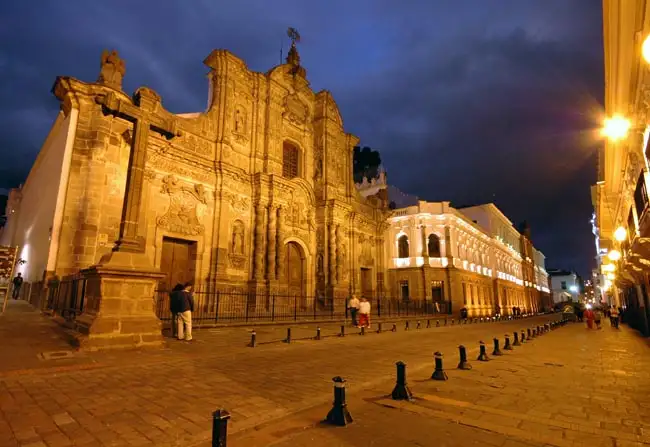
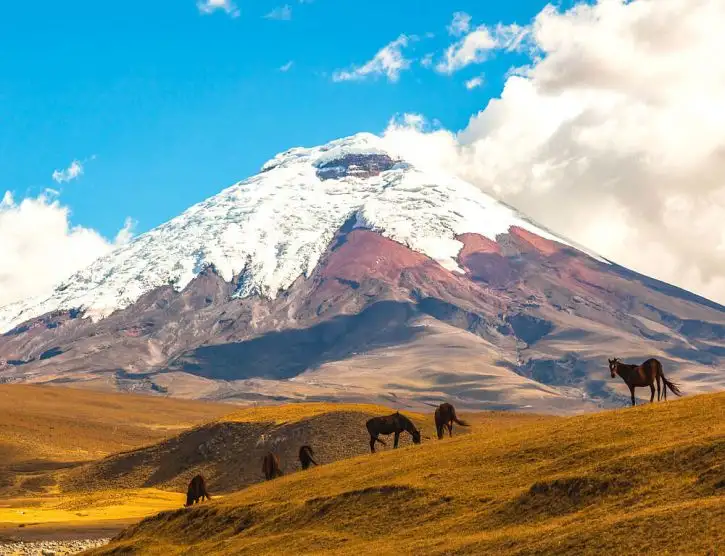
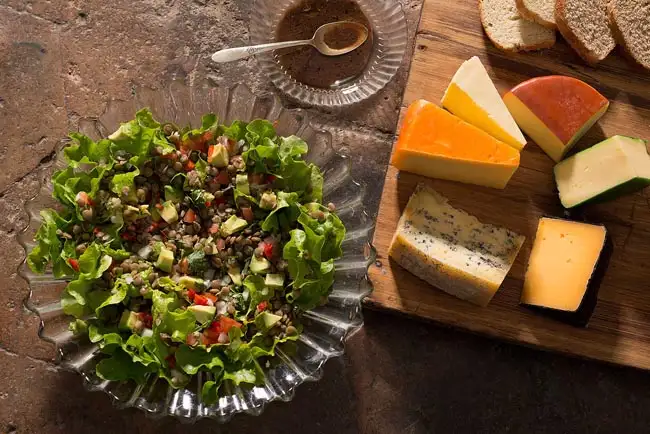
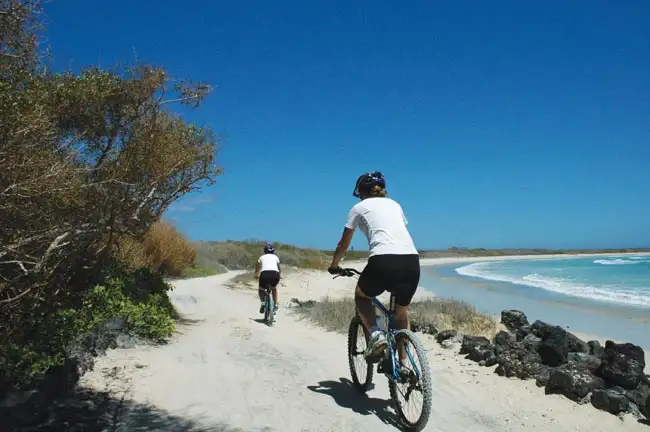
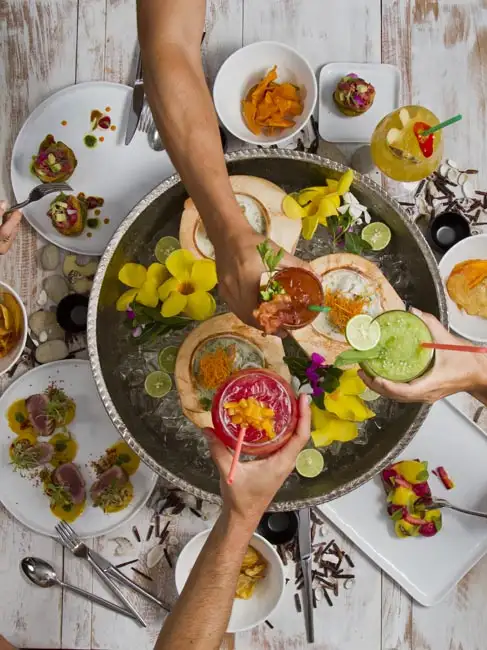

Book This Tour
- Final payment: Due 90 days prior to departure.
- Deposit: A non-refundable $500 CAD Deposit is required at booking.
- Optional Single Supplement: $2040 CAD (number of singles limited).
(View options forsingle travellers) - Transfering Tour or Date: Transferring to another tour or tour date is only permissible outside of 120 days prior to departure and is subject to a $100 CAD change fee.
(Read our cancellation policy)
Prices below are per person, twin-sharing costs in Canadian Dollars (CAD). Pricing does not include airfare to/from the tour and any applicable taxes.
Frequently Asked Questions
- What is the maximum number of participants on a trip?Most of our tours carry a maximum of 18 participants; some tours (ie hiking tours) top out at 16. In the event that we do not achieve our minimum complement by our 90-day deadline, we may offer group members the option of paying a "small-group surcharge" as an alternative to cancellation. If all group members agree, we will confirm the trip at existing numbers; this surcharge is refundable in the event that we ultimately achieve our regular minimum. If the small group surcharge is not accepted, we will offer a refund of your deposit or a different trip of your choice.
- Can I extend my tour either at the beginning or end? What about stopovers?Yes, you can extend your tour either at the beginning or the end and we can book accommodation in our tour hotel. Stopovers are often permitted, depending on air routing. Stopovers usually carry a "stopover" fee levied by the airline.
- How do I make a reservation? How and when do I pay?The easiest way to make a reservation is via our website; during office hours, you are also more than welcome to contact us by telephone.
A non-refundable deposit is payable at the time of booking; if a reservation is made within 90 days, full payment is required. Some trips require a larger deposit. If international airline bookings require a non-refundable payment in order to secure space or the lowest available fare, we will require an increase in deposit equal to the cost of the ticket(s).
Early enrolment is always encouraged as group size is limited and some trips require greater preparation time.
Once we have received your deposit, we will confirm your space and send you a confirmation package containing your trip itinerary, any visa/travel permit related documents, invoice, clothing and equipment recommendations, general information on your destination(s), and forms for you to complete, sign and return to us. Your air e-tickets (if applicable), final hotel list, final trip itinerary, and instructions on how to join your tour, will be sent approximately 2-3 weeks prior to departure. - What about cancellations, refunds, and transfers?Please review our cancellation policy page for details.
- I am a single who prefers my own room. What is a single supplement?All of our tours have a single supplement for those who want to be guaranteed their own room at each location.
This supplement is a reflection of the fact that most hotels around the world do not discount the regular twin-share rate for a room by 50% for only one person occupying a room. Most hotels will give a break on the price, but usually in the range of 25-30% of the twin-share rate. This difference, multiplied by each night, amounts to the single supplement.
The conventional amount can also vary from country to country and some destinations are more expensive than others for single occupancy. In order to be "single friendly," the supplements we apply are not a profit centre for us and we do our best to keep them as reasonable as possible.
On most tours we limit the number of singles available, not to be punitive, but rather because many hotels allow for only a limited number of singles; some smaller hotels at remote locations also have a limited number of single rooms available.
Please note that most single rooms around the world are smaller than twin-share rooms and will likely have only one bed. - Do you have a shared accommodation program?Yes! If you are single traveller and are willing to share, we will do our best to pair you with a same-gender roommate. Please note that should we fail to pair you, we will absorb the single supplement fee and you will default to a single room at no extra charge.
